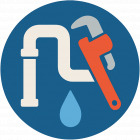How to Choose an Emergency Plumber: 7 Questions to Ask Before They Arrive
When your kitchen floods or the water heater starts spewing, panic is tempting. Pause for a breath and ask the right questions before an emergency plumber shows up. That short conversation can save money, time, and a soggy ceiling. Below are seven direct, practical questions to ask, plus why each matters when searching for plumbers near you, emergency plumbing help, or fast drain cleaning and water heater repair.
1. Are you licensed and insured?
Ask for a license number and the insurer’s name, then jot them down. A license means the tech met local standards; insurance protects you if something goes wrong while they work on your property.
2. What’s your ETA and how do you handle emergency calls?
Response time is crucial with leaks or overflowing toilets. Confirm whether they operate a true 24/7 emergency line or use on call subcontractors, and get a realistic arrival window.
3. What will you charge right now: call out fee, hourly rate, or flat price?
Emergency work often includes a trip charge. Ask for a rough estimate for labor and typical parts. If they mention a brand name or specific part for a tankless water heater or similar, ask for cost ranges.
4. Have you fixed this kind of problem before?
Be specific: say “clogged toilet,” “water heater leaking,” or “leak detection in slab.” Technicians experienced with those issues will troubleshoot faster; inexperienced ones might just patch the symptom.
5. Can you give a written estimate and explain options?
Insist on a simple written estimate before major repairs, this prevents surprise invoices. If replacement is suggested, ask about repair versus replacement and any brands they recommend for water heater replacement or installation.
6. Do you warranty your work and offer aftercare?
A reliable company stands behind its repairs. Ask the length of the warranty, what it covers, and how follow up calls are handled. This separates reputable plumbing companies near you from fly by night outfits.
7. How do I verify you when you arrive?
Request the technician’s name, vehicle description, and a contact number so you can confirm credentials at the door. Also check whether they accept card payments or need cash, and whether they provide receipts for plumbing services.
Quick practical tips while you wait: shut off the main water if a major leak is present; take photos for documentation; and avoid DIY fixes that could worsen the damage.
Choosing an emergency plumber is partly about speed, but mostly about trust and competence. Ask these seven questions calmly and your odds of a clean, honest repair increase dramatically. Keep a saved contact for a vetted local plumber so the next emergency feels less chaotic and more resolvable. #EmergencyPlumber #PlumbingTips #LeakDetection #DrainCleaning
